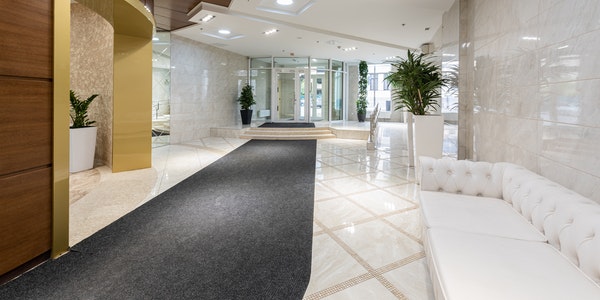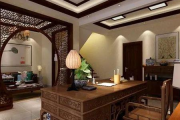Status of Lighting Market
How to choose lamps for home decoration, this topic is very hot on the Internet, and there are many answers. But some are outdated. For example, many answers are still in the era of incandescent lamps and energy-saving lamps, but now it is LED lighting. Some are all kinds of lamps and lanterns investment advertisements. People have said a lot of theory, but the practical guiding significance is not strong. Some answers are too professional.
For ordinary users, there is generally no time to learn lighting professional terms such as luminous flux, illuminance, etc. In addition, if you go to a lighting store, the sales staff often recommend it based on personal experience, and these experiences have not formed a standardized text. Even professional store sales training for some brand stores tends to focus too much on sales skills. And this kind of training is often carried out based on its own product market positioning and its own products, and there is a certain one-sidedness.
In fact, the answer that users want is nothing more than “what kind of lamp should I choose?” To expand this question, it is the following small questions one by one: How to choose the style of lamps and lanterns? Which lighting should I choose for different spaces? What size to choose? How to choose the light color? Is it to choose the brand or focus on the style? How can the quality and after-sales be guaranteed? What we do to spend less money? how to install? 
1. The Choice of Lighting Style
The style of lamps and lanterns follows the style of the overall home decoration, such as Nordic style decoration, it is recommended to install Nordic style lamps, simple modern decoration is suitable for simple lamps. Chinese style decoration is suitable for matching Chinese lamps. Lamps and furniture, like furniture, must match the decoration style. The most common problem in this link is that even the owners themselves often don’t know what effect they want to decorate!
Therefore, you can go to see more decoration cases and communicate with decoration companies more. Lamps generally enter the market together with home appliances and furniture, or even enter the market later than them, so there is relatively ample time to compare and choose.
2. The choice of Lamps and Fixtures
According to the function, the types of lamps are generally divided into main lamps and auxiliary lamps. Home lighting, generally the main light and auxiliary lights cooperate with each other. The function of the main light is to provide the main lighting of the space, and the auxiliary light is to supplement the light of a specific position and increase the sense of space.
The choice of the main light mainly depends on the height of the house. The main lamps are commonly used ceiling lamps and chandeliers. Generally, the ceiling of 2.5 meters to 2.8 meters is suitable for ceiling lamps. Above 2.8 meters, it is recommended to use chandeliers.
Auxiliary lights, mainly including spotlights, downlights, light strips, wall lamps, table lamps, floor lamps, mirror headlights, track spotlights, etc. These are mainly selected according to the characteristics of each space, and matched with the main lights to meet the needs of different functions.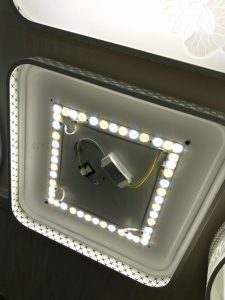
3. Lamp Size and Power Selection
The selection of lamps for home decoration is generally based on the order of the living room, dining room, master bedroom, secondary bedroom, balcony, aisle, kitchen, bathroom, etc., from primary to secondary. The selection of lamps and lanterns is also the first main lamp, and then the auxiliary lamps.
In the living room, depending on the floor height, choose a ceiling lamp or a chandelier as the main light. Merchants generally recommend the size of lamps according to the area. Lamp power and lamp size are generally proportional, that is, the larger the size, the higher the power, and the brighter the lamp. For example, a living room of 20 to 25 square meters and a floor height of 2.6 meters can choose a 90*60cm LED ceiling light. After the main light is determined, it is the auxiliary light source such as light strips, downlights and spotlights. According to actual needs, some TV wall lamps, floor lamps and so on will be arranged.
The dining room is generally connected to the living room, and chandeliers are commonly used, and ceiling lamps or fan chandeliers can also be considered.
The master bedroom is generally the largest in the bedroom, with an area of more than 15 square meters. Generally, a ceiling lamp with a larger size is used as the main light, and it is recommended to add a wall lamp or a table lamp as an auxiliary light source.
The second bedroom is similar to the master bedroom, but the size of the main light is adjusted accordingly according to the area.
As for the balcony aisle and the kitchen and bathroom, these spaces are highly functional and require better brightness. The size can be correspondingly larger, and more ceiling lamps are used. 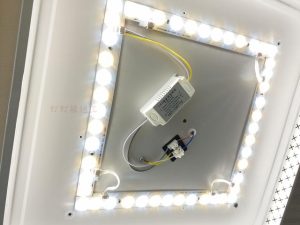
4. Light Color of Lamps
There are many tutorials on this piece of the Internet, for example, it is recommended to use 6000k color temperature in the living room and so on. However, these tutorials may be relatively old, and may be written in the era of fluorescent energy-saving lamps. Because of energy-saving lamps, a lamp can only have one color temperature and cannot change light, so it is recommended to use color temperature.
However, now the entire industry basically uses LED light sources. A light can be single-color light (white light, neutral light or warm light), three-color light (white light, neutral light, warm light three-color switch switching), or remote control dimming (with remote control), or even Use remote control + voice control + mobile APP. Therefore, regarding which color temperature to choose, you can choose the one that suits you according to your own needs.
5. Lamp Brand Selection
Several key factors are price, quality, installation and after sales.
Speaking of this, we must talk about the market characteristics of the lighting industry. Let’s talk about the lamps themselves. There are various materials for lamps (iron, copper, aluminum, stainless steel, cloth, plastic, wood, zinc alloy, crystal, glass, resin, acrylic, etc.), and various processing techniques (electroplating, painting, powder spraying, welding, bending, polishing, wire drawing, oxidation, etc.). Therefore, the styles of lamps and lanterns are also ever-changing, and the quality is uneven. The price ranges from a few dollars to tens of thousands.
In this industry, the entry threshold is relatively low. A processing plant can be set up with a few machines, and an assembly plant can be set up with a few tables. There are more than 10,000 manufacturers in the lighting industry, and the scale is generally small. Together, several major brands account for less than 5% of the market, and there is no monopoly. 
For users, lamps are used every day. But the attention is not high, and the purchase frequency is unstable. Ordinary users generally only use it when new houses are renovated and replaced, and only then can they find, understand, compare, and buy. It is very difficult to learn and distinguish in a short period of time. This is why most buyers feel at a loss when buying lamps.
famous brand
Advantages: It has relatively high brand awareness, relatively good R&D and product advantages, and usually has some aspects that are very popular in the industry. Usually there are perfect offline channels, and now there are basically online brand flagship stores. Because of their offline brand influence, their e-commerce has also developed rapidly and is also a leader.
Relative disadvantages: In order to maintain brand awareness, it is necessary to maintain high advertising expenses, channel expenses and brand premiums, so the market price of products is generally relatively high. It is mainly for user groups who are more biased towards brands. In addition, large companies generally have weaknesses such as long decision-making time and insensitive market production response. It is mainly to do the styles developed by myself, and there are obvious conflicts between online and offline.
Relatively high prices, relatively limited styles, and online and offline conflicts are its main features.
Second-tier brand
Features: Mainly follow well-known brands, the price has been reduced, and there are also some unique styles. However, the brand awareness is not very strong, and it wants to maintain a relatively high price, so the positioning is slightly awkward. If there are no revolutionary products or breakthrough marketing methods, it is difficult to impact the field of first-line brands. At the same time, it also faces market squeeze from other manufacturers. 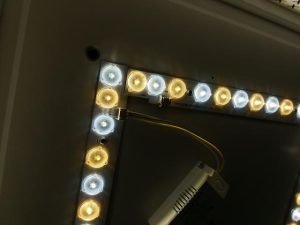
Low price product
First of all, I am afraid that no company is willing to take the initiative to lower the price, which is usually forced by the market.
Low price is usually divided into three situations: one is to lower the price appropriately to win the order without reducing the quality of the product. This is actually a kind of price negotiation. The other is low price and low quality, this one is the worst. But existence is reasonable, and this category does meet some market needs. There is also a low price of a single product, hoping to drive the sales of other products. Faced with the temptation of low prices, consumers should figure out the reasons for their low prices.
Bought in store or online
The physical store has many advantages. You can see the real thing, the after-sales service is relatively guaranteed, and it provides door-to-door installation if you buy more. But the downside is that the styles of lamps in each store are relatively limited, and the selectivity is poor. In addition, the consumer objects of lighting stores are limited, usually within a radius of tens of kilometers, and the cost of rent and personnel expenses is relatively high, so the price is usually high.
Buying online has a lot of options and the price is relatively favorable, so the development is very fast. The main concern of online shopping is the after-sales service, but online transactions are also becoming more and more perfect. Many online shops are out of the fittest. Now there is also a door-to-door installation service. Generally, the door-to-door installation can be packaged with the full amount of money.

